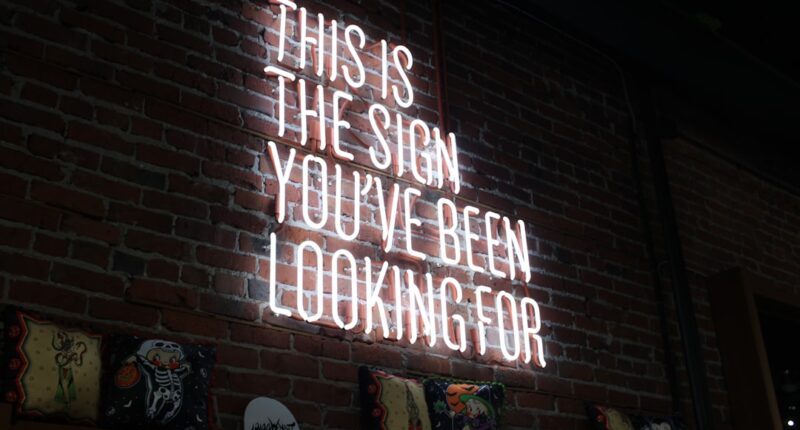Non-fungible tokens (NFTs) are digital assets representing ownership or authenticity of unique items or content, such as artwork, videos, music, or tweets. Unlike fungible cryptocurrencies like Bitcoin or Ethereum, NFTs are non-interchangeable due to their unique nature. NFTs utilize blockchain technology, a decentralized digital ledger that records immutable transactions across multiple computers.
To create an NFT, creators select a platform to mint their digital artwork. This involves uploading the digital file to an NFT-supporting marketplace like OpenSea, Rarible, or Foundation and paying a fee to mint the NFT on the blockchain. The minting process assigns a unique digital signature to the NFT, verifying its authenticity and ownership.
This signature is stored on the blockchain, ensuring public accessibility and transparency. Purchasing an NFT grants ownership and rights to the digital asset, which can be sold or traded on various NFT marketplaces. NFTs have gained significant attention in recent years, particularly in the art world.
They offer artists a new method to monetize digital creations and provide collectors with opportunities to own and trade unique digital assets. The rise of NFT art has sparked debates regarding its impact on the traditional art market, environmental concerns, and the future of digital creativity and ownership.
Key Takeaways
- NFTs are unique digital assets that represent ownership of a specific item or piece of content using blockchain technology.
- NFT art has disrupted the traditional art market by providing a new platform for artists to showcase and sell their work directly to collectors.
- Digital artists have found a new avenue for recognition and financial success through NFTs, challenging the traditional art world’s hierarchy.
- NFT art has faced criticism for its environmental impact due to the energy-intensive process of minting and trading digital assets on the blockchain.
- NFT art has opened up a new form of collecting and investing, allowing individuals to own and trade digital art in a decentralized marketplace.
The Impact of NFT Art on the Traditional Art Market
Democratizing the Art World
The rise of NFT art has leveled the playing field, allowing artists to connect directly with collectors and gain recognition without the need for traditional gatekeepers. This shift has opened up new opportunities for digital artists to thrive and has given collectors access to a broader range of artistic styles and mediums.
Redefining Ownership and Provenance
NFT art has also redefined the concept of ownership and provenance in the art world. Through blockchain technology, NFTs provide a secure and transparent way to verify the authenticity and provenance of digital art. This has led to a shift in perception among collectors and investors, who are increasingly recognizing the value and significance of owning digital assets as part of their art collections.
The Future of Art Consumption and Ownership
As NFT art continues to gain traction, its impact on the traditional art market will continue to evolve. While some critics argue that NFT art devalues traditional forms of art, others believe it opens up new possibilities for artists to explore and experiment with digital mediums. One thing is certain – NFT art is shaping the future of art consumption and ownership, and its influence will be felt for years to come.
The Rise of Digital Artists in the NFT Space

The rise of NFT art has given rise to a new generation of digital artists who are leveraging blockchain technology to create and sell their artwork in ways that were previously not possible. Digital artists are using NFTs as a means to gain recognition and financial support for their work, as well as to connect with a global community of collectors and enthusiasts who are interested in owning and trading digital assets. One of the key advantages of NFTs for digital artists is the ability to retain ownership and control over their work, as well as to receive royalties from secondary sales.
This has empowered artists to monetize their digital creations in a more equitable and sustainable manner, while also challenging traditional notions of authorship and intellectual property in the digital age. Moreover, NFTs have provided digital artists with a platform to experiment with new forms of expression and creativity, pushing the boundaries of what is considered art in the digital realm. From virtual reality experiences to generative art and interactive installations, NFTs have enabled artists to explore innovative ways of engaging with audiences and creating immersive experiences that transcend traditional artistic mediums.
As more digital artists enter the NFT space, there is a growing sense of excitement and potential for the future of digital art, as well as a recognition of the need to address issues such as inclusivity, sustainability, and ethical practices within the NFT community. The rise of digital artists in the NFT space signals a shift towards a more diverse and dynamic art ecosystem that embraces technology and innovation as integral components of artistic expression.
The Challenges and Controversies Surrounding NFT Art
While NFT art has garnered widespread attention and enthusiasm, it has also been met with challenges and controversies that have sparked debates about its impact on the art world and broader societal implications. One of the primary concerns surrounding NFT art is its environmental footprint, particularly in relation to the energy consumption associated with blockchain technology. The process of minting NFTs and validating transactions on the blockchain requires significant computational power, which has raised questions about the carbon footprint of NFT art and its sustainability in the long term.
Critics argue that the environmental impact of NFTs undermines their potential benefits for artists and collectors, while proponents advocate for sustainable solutions and alternative approaches to mitigating the environmental effects of blockchain technology. Another contentious issue surrounding NFT art is its potential for copyright infringement and intellectual property disputes. As NFTs enable digital assets to be bought, sold, and traded across decentralized marketplaces, there is a lack of clarity around legal frameworks and regulations governing ownership rights and royalties for digital artists.
This has led to instances of plagiarism, unauthorized use of copyrighted material, and disputes over ownership claims within the NFT community. Furthermore, the speculative nature of NFT art has raised concerns about market manipulation, price volatility, and fraudulent activities within NFT marketplaces. The rapid growth of NFTs has attracted speculators and opportunists seeking quick profits, leading to inflated prices and questionable practices that undermine the integrity and credibility of the NFT ecosystem.
As NFT art continues to evolve, it is essential for stakeholders to address these challenges and controversies through collaborative efforts to establish ethical standards, transparency, and accountability within the NFT community. By addressing these issues head-on, NFT art can strive towards a more sustainable and inclusive future that benefits artists, collectors, and audiences alike.
NFT Art as a New Form of Collecting and Investing
NFT art has redefined the concept of collecting and investing in art by offering a novel way for individuals to acquire and own unique digital assets with potential value appreciation over time. Unlike traditional forms of art collecting, which often require physical storage and maintenance of artworks, NFTs provide collectors with a convenient and secure means to acquire and manage their digital collections through blockchain technology. Moreover, NFT art has introduced new opportunities for investors to participate in the art market by diversifying their portfolios with digital assets that have the potential for long-term growth and cultural significance.
As more collectors recognize the value of owning NFTs as part of their investment strategy, there is a growing demand for transparency and due diligence in evaluating the authenticity and provenance of digital artworks. Additionally, NFTs have enabled artists to establish direct relationships with collectors and patrons who are interested in supporting their work through crowdfunding initiatives, patronage models, or community-driven collaborations. This has fostered a sense of community engagement and empowerment among collectors who are passionate about supporting emerging artists and contributing to the growth of the NFT ecosystem.
While NFT art presents new opportunities for collecting and investing in digital assets, it also raises questions about the intrinsic value of digital artworks and their cultural significance in relation to physical art objects. As collectors navigate this new frontier of art collecting, it is crucial for them to consider the broader implications of owning NFTs and their role in shaping the future of art consumption and patronage.
The Environmental Concerns of NFT Art

The Dark Side of Blockchain Technology
The environmental concerns surrounding NFT art have become a focal point of discussion within the art world and broader public discourse due to the significant energy consumption associated with blockchain technology. The process of minting NFTs and validating transactions on blockchain networks requires substantial computational power, which contributes to carbon emissions and energy consumption on a scale that has raised alarm bells among environmental advocates.
Towards Sustainable Solutions
The high energy consumption associated with blockchain technology has led to calls for greater transparency and accountability within the NFT community to address these concerns through sustainable solutions and responsible practices. In response to these concerns, some artists and platforms have taken proactive measures to mitigate the environmental impact of NFTs by exploring alternative blockchain networks with lower energy consumption or implementing carbon offset initiatives to neutralize their carbon footprint.
A Greener Future for NFT Art
As stakeholders within the NFT community continue to grapple with these environmental challenges, there is an opportunity to foster dialogue and collaboration towards developing innovative solutions that align with sustainable practices while preserving the creative potential of NFT art. By addressing these concerns proactively, NFT art can strive towards a more environmentally conscious future that balances artistic innovation with ecological responsibility.
The Future of NFT Art and Its Potential for Creativity
The future of NFT art holds immense potential for creativity as it continues to evolve and shape new paradigms for artistic expression in the digital age. With advancements in technology and blockchain infrastructure, artists are exploring innovative ways to push the boundaries of what is possible with NFTs by experimenting with virtual reality experiences, augmented reality installations, interactive storytelling, and other immersive forms of digital art. Moreover, NFTs have opened up new avenues for collaboration between artists, technologists, and creative practitioners from diverse disciplines who are leveraging blockchain technology to create interdisciplinary projects that transcend traditional artistic mediums.
This convergence of art and technology has given rise to a dynamic ecosystem of experimentation and exploration that is redefining how we perceive, consume, and interact with art in virtual spaces. As NFT art continues to gain traction, there is an opportunity for artists to explore themes such as decentralization, identity, ownership, sustainability, and social impact through their creative practice. By harnessing the potential of blockchain technology as a tool for artistic innovation, artists can engage with audiences in novel ways that challenge conventional modes of artistic production while fostering meaningful connections between creators and collectors.
Ultimately, the future of NFT art hinges on embracing creativity as a driving force for positive change within the global creative community. By nurturing an inclusive environment that values diversity, equity, accessibility, and ethical practices, NFT art can pave the way for a more vibrant and sustainable future that empowers artists to realize their creative vision while engaging audiences in transformative experiences that transcend traditional boundaries.
If you’re interested in learning more about the potential career opportunities in the NFT space, check out this article on NFT Jobs. It provides valuable insights into the growing demand for professionals with expertise in blockchain technology and digital art, making it a great resource for anyone looking to break into the NFT industry.
FAQs
What are NFTs?
NFTs, or non-fungible tokens, are digital assets that represent ownership or proof of authenticity of a unique item or piece of content, such as art, music, videos, or collectibles, using blockchain technology.
What is NFT art?
NFT art refers to digital artwork that is tokenized as an NFT, allowing it to be bought, sold, and owned on the blockchain. This has transformed traditional art into digital assets that can be traded and collected.
How does NFT art work?
NFT art is created and verified using blockchain technology, which ensures the uniqueness and ownership of the digital artwork. Artists mint their work as NFTs, and collectors can purchase and own these digital assets through NFT marketplaces.
What are the benefits of NFT art for artists?
NFT art provides artists with a new way to monetize their work, as they can receive royalties from secondary sales of their NFTs. It also allows for direct engagement with collectors and eliminates the need for intermediaries in the art market.
What are the concerns surrounding NFT art?
Some concerns about NFT art include its environmental impact due to the energy consumption of blockchain networks, the potential for copyright infringement, and the volatility and speculative nature of the NFT market.
How is NFT art transforming creativity?
NFT art is transforming creativity by providing artists with new opportunities to showcase and sell their work in the digital realm. It has also sparked discussions about the concept of ownership and value in the digital age.





